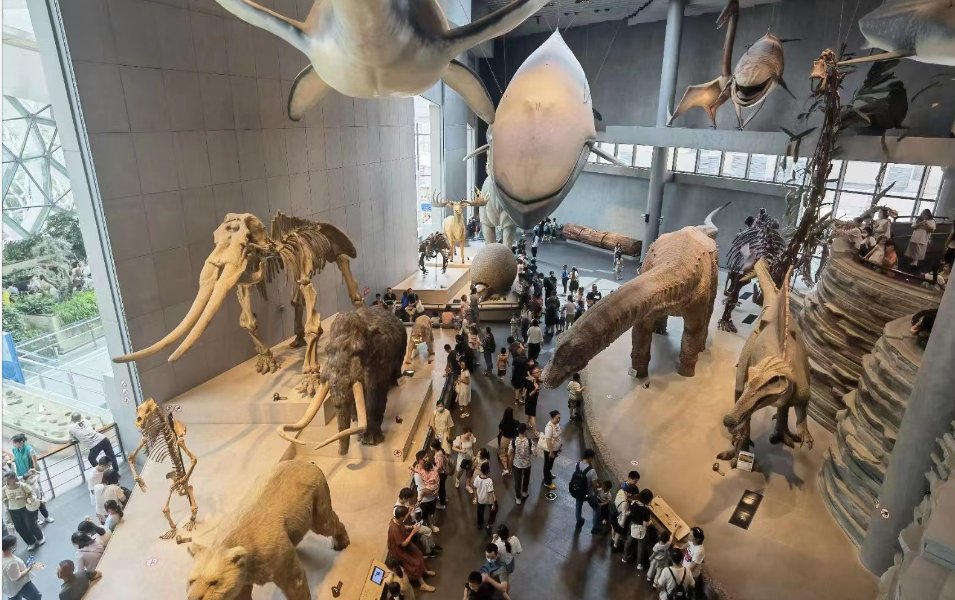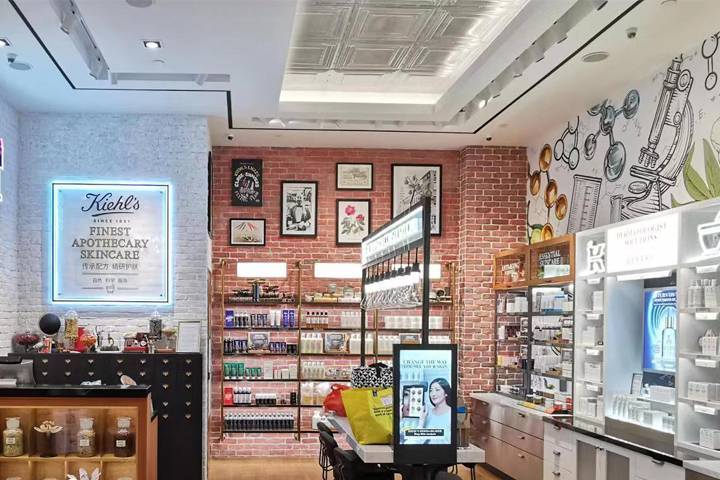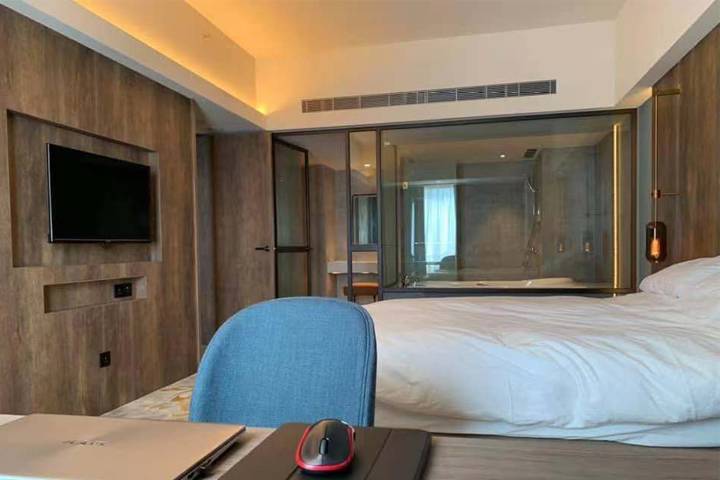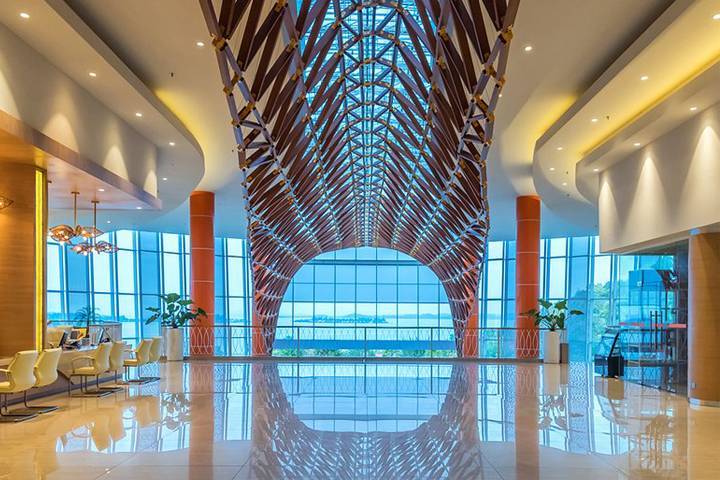As a space for collecting, displaying and researching items that represent the heritage of nature and human culture, the museum holds great cultural and educational significance. The museum’s lighting design has an impact not only on the display outcomes but also on the protection of exhibits. A favorable lighting environment enables people to have the best visiting experience and to grasp the development of history and civilization.

The greatest value of the artifacts in the display cabinets is for the audience to appreciate the exhibits as a whole as well as the details at a very close distance. The greatest value of the lighting in the cabinets is to restore the physical characteristics of the exhibits, highlight the artistic characteristics, so as to meet the aesthetic needs of the visual experience in a very small space.
Now, let’s unveil the mystery behind museum lighting design. Beyond art, museum lighting revolves more around technology, demanding a particularly meticulous and rigorous approach.
PART 1
Types of museums and lighting performance.
Different types of museums demand different lighting of essential differences. Museums can be divided into four categories: social history, art and culture, science, and others. Different museums have different content and forms, and the lighting should be different.
For example, history museums focus on the restoration of historical scenes and the presentation of artifacts. The lighting should be mainly in warm colors so as to create a quiet and comfortable atmosphere, which is suitable for people to calm down and appreciate the artifacts.

Museums of science and technology mainly aim to show scientific phenomena and bring about the sense of science and technology. The lighting should be neutral white, and the illumination should be modestly high. In the area that highlights the sense of science and technology, the bluish light would be well-suited.
Therefore, as for different museums, lighting should be considered separately. The positioning of the museum is normally determined at the initial stage of construction. And lighting designers should communicate with the museum or the owner at the beginning to fully understand these needs and determine the keynote of the lighting which is the basis and reference for all subsequent lighting work.
It consists of the following three parts:
1. Illuminance and brightness: Illuminance and brightness varies according to the kinds of museum. For example, illumination in ordinary museums should be low to protect the artifacts, and the brightness is relatively low. However, art museums have fewer artifacts, and they are rich in color, so the overall illuminance should be high. Floodlights or wall washers are mainly used for lighting. It is convenient for the audience to communicate and appreciate the details of the exhibits.

2. Cool & warm colors: Light of different colors will brings about different emotional experiences. Cool colors represent coldness, coolness and technology, which are mainly used in art galleries. Warm colors evoke comfort, warmth and enthusiasm, which are suitable for ordinary museums.

3. The ability to accurately reveal the color of the object: Basically, museums have high requirements for this ability of light. Since the overall illuminance is low, to see the exhibits clearly, light sources with a high color rendering index are necessary. But there are exceptions. low-CRI lights are deliberately selected to create a certain atmosphere. For example, in the Anti-Corruption galleries, when light of low-CRI is projected on the villains, it looks more shocking.

The keynote of lighting should be determined first in lighting design of any museum.
PART 2
1. Exhibition themes and lighting atmosphere
Each exhibition has its theme. How to convey the theme and create atmosphere by lighting? It consists of three aspects: color temperature, light and shadow, brightness and darkness.

In this art gallery, there are only white walls, relatively simple paintings; a spacious hall with no complicated layout. Warm, soft and pure light, shining on the paintings, and echo the floor and frame of wood color. Sunlight from the skylight makes the space more natural.

Extensively used marble, stone reliefs, crystal chandeliers, along with warm and yellowish light make the space magnificent!

The picture above is a typical light environment of a museum. Low illuminance, cooperated with dark materials and warm light bings the audience into a tranquil and comfortable atmosphere!

The illuminance and color temperature in an art gallery are relatively high. As the illuminance is high, an appropriate increase in the color temperature can make the space brighter and more natural. Considering the artwork is rich in color, light sources with high color rendering index are very important, for they can accurately reveal the true colors of the artwork.

Since there are many replicas in the museum, and the layout is relatively complicated, plus the visitors are mainly children, therefore, to create a natural and clear light environment, light sources with color temperature above 4000K and a high CRI (Ra>90) are normally used.

The memorial hall, especially those to commemorate the suffering of nation, usually would try to create an immersive experience by reproducing the historical scenes and multimedia presentations. The lighting would also strengthen the contrast between black and white. Some scenes would be illuminated with cool lighting to give the sense of horror and suffering. Generally, a collocation of low illumination, warm & cool color temperature, and high & low CRI.
2. Light and shadow: Light and shadow can enrich the space.
Nowadays, due to too much emphasis on uniform and soft light, museums tend to look average and lack of change. We often see that around the visitor’s route or even the entire space is flooded with warm and uniform light. It won’t be long before the visitors get bored.

A good combination of light and shadow can enrich the space. People are used to the light and shadow of nature. It also applies to the indoor lighting design.

Light and shadow can also give the space a sense of multiple layers in a relatively simple exhibition space.

The light-shadow belt can highlight the key points and create the three-dimensional effect.
3. Brightness and darkness: highlight the key points through the contrast of brightness and darkness.

This is a most commonly way in museum to present an item. For example, use narrow-beam lights to illuminate exhibits. Or use the contrast between brightness and darkness to create a dramatic effect and strengthen the emotions.
The lighting atmosphere created by color temperature, light and shadow, brightness and darkness can accentuate the theme and highlight the key points.
PART 3
Lighting Safety and Quality in the Museum
1. Lighting safety: Controlling the total annual exposure of artifacts and art is an important means of balancing protection and display. The ultraviolet radiation in light and natural light should be reduced to less than 20μW/lm.
Conservative light levels and annual light exposure for different collections are as follows:

Exhibits that are particularly sensitive to light: textiles, paintings, bone products, wood products, ceramics, gems and jade, etc. They require a quite strict standard of illuminance and annual exposure. The harm of light to collections is mainly the “photobleaching”. In addition to the multi-layer coating treatment of paintings, utilizing the light in a scientific way is most important.
Comparison of Domestic and International Illuminance Standards for Museum Exhibition Room Displays (unit: lx), as follows:


The light spectrum is divided into three main groups: ultraviolet (UV) radiation, visible light and infrared radiation. ultraviolet and infrared radiation can do damage to exhibits such as paintings, silk, leather, manuscripts, etc. The light spectrum of professional-grade LED chips does not contain ultraviolet and infrared radiation, which plays an excellent role in protecting precious artifacts and art. Especially for those are the light-sensitive.
2. Lighting quality: Lighting with high color rendering index can accurately reveal the original appearance and color of artifacts, and truly present human civilization.

In places for exhibiting paintings, colored fabrics, and multi-color items,the general CRI(Ra)of lights should be no less than 90. Other places, no less than 80.
The installation position of light fixtures in museum is also very important. It directly affects the exhibition result. Due to different positions of the lights, there are 5 angles: front, side, top, back, and 45-degree side. These angles have their own characteristics and can also be used in combination. The height of the lights directly determines the size and intensity of the light spot projected on the exhibits. For example, a light with a beam angle of 6 degrees forms a central light spot that is 30cm in diameter at a distance of 3m. If the distance is 5m, the diameter of the central light spot will grow to 54cm, and the intensity will be reduced by 65. %.



effect and the illumination angle and height
Museum exhibitions are generally composed of three aspects: scenes, three-dimensional space and exhibits. Lighting design in museum usually adopts a combination of general lighting and local accent lighting.

Exhibits on the vertical plane include paintings, prints, photographic works and important documents, etc. Soft and continuous light are generally used, so that the vertical plane has a good contrast of brightness and darkness.
PART 4
Lighting of the display cabinets
Different kinds of display cabinets shorten the distance between precious exhibits and visitors. We can closely appreciate the splendid creation of human civilization. Display cabinets include wall cabinets (calligraphy and painting cabinets), five-sided cabinets, four-sided cabinets, flat cabinets, and niche cabinets. Lighting involves in-cabinet lighting and out-cabinet lighting. Due to the reflective and transparent nature of the glass, the layout of light fixtures needs to take the feelings of the audience into account.

If the light fixtures are more than the capacity of the cabinet, it can also be illuminated by external spotlights. Remember to hide the light source in the cabinet,and make sure that the illuminance in the cabinet is uniform, and the uniformity of illuminance should be higher than 0.3. Reflection from the surface of the exhibit or the glass of the cabinets should be taken into consideration. Take anti-ultraviolet measures to inhibit the temperature rise in the cabinet, and set an automatic or manual switch. Requirement for the height and thickness of cabinet glass in advanced exhibitions is high. Double-tube lights are used to make the illuminance of the vertical surface in the cabinet uniform. Meanwhile, they can avoid indirect glare caused by the secondary reflection of the cabinet glass.
PART 5
Recommended lighting applications for museum lighting
Ultimate design and advanced optical technology bring about new applications to lighting design of museum. With the help of advanced optical design, Mibang Lighting provides light fixtures of different beam angles, and the focusable structures allow the transformation of light type to be completed in an instant. The multipurpose light fixtures will save you 80% of the light storks for your museum or art gallery, and give you a more convenient choice of light.


Different museums require different lighting performance. Different exhibitions require different lighting atmosphere. A good lighting design of museum will give the visitors an immersive experience and an endless aftertaste!




